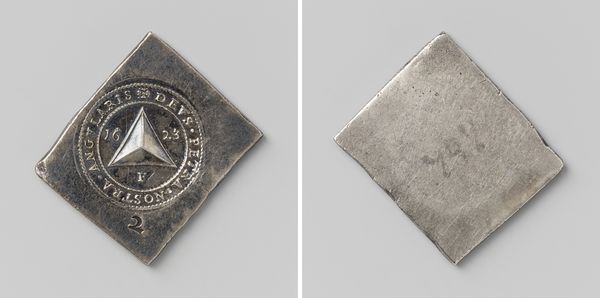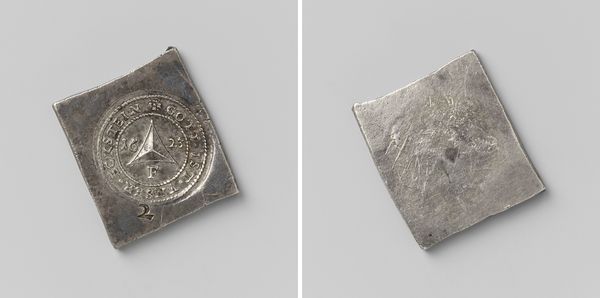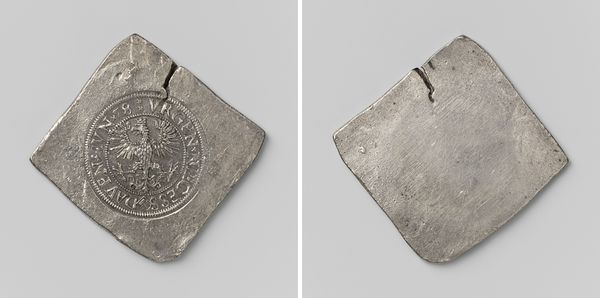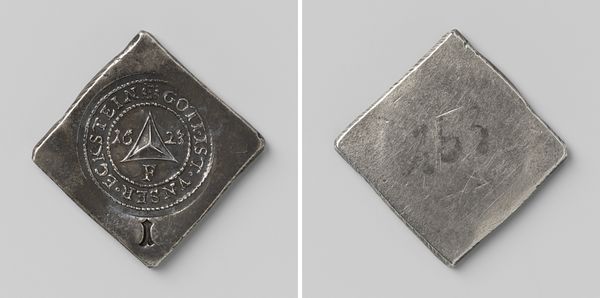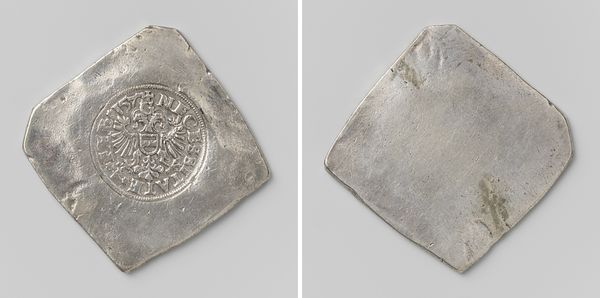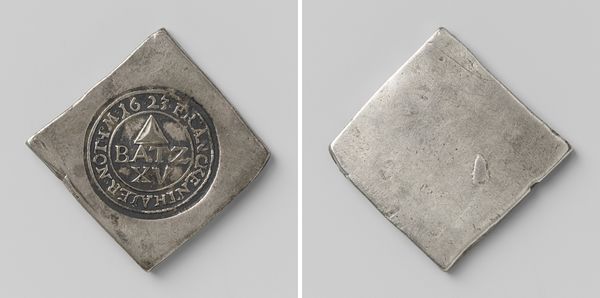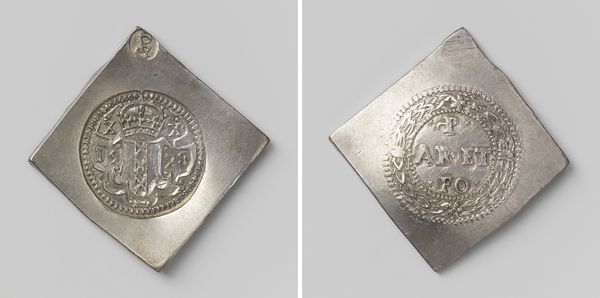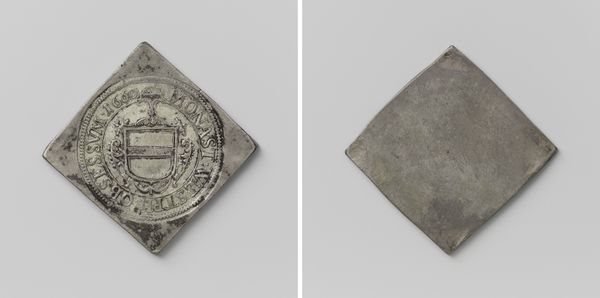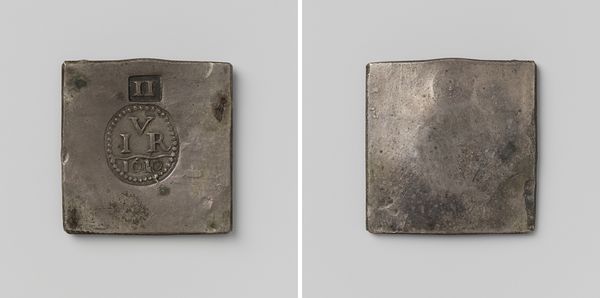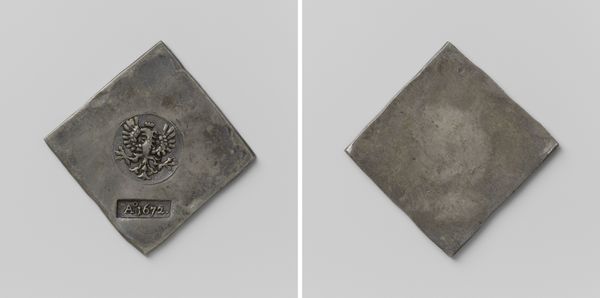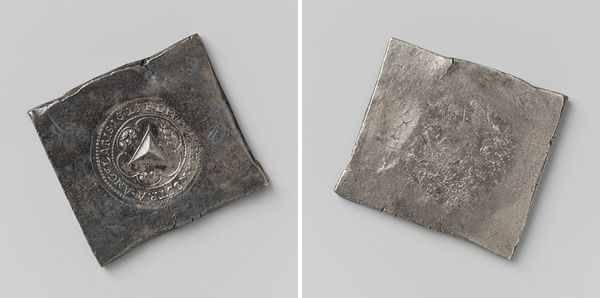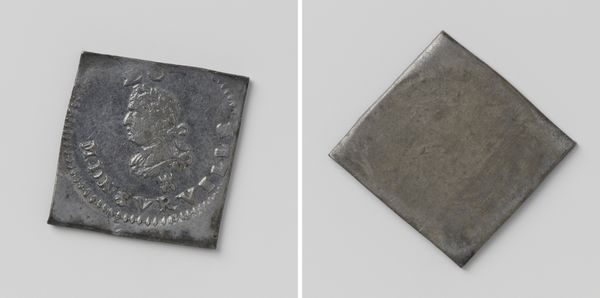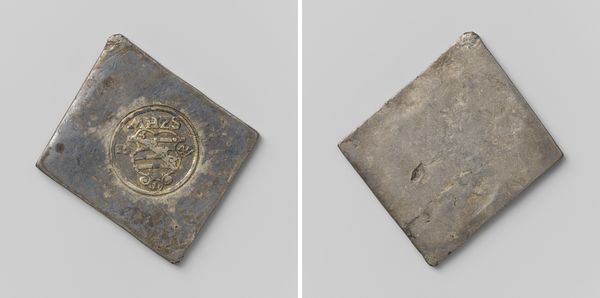
veertig stuiver, noodmunt uit Breda, geslagen tijdens het beleg door Spinola 1625
0:00
0:00
Dimensions: height 4.6 cm, width 4.5 cm, weight 10.1 gr
Copyright: Rijks Museum: Open Domain
Curator: The Rijksmuseum holds this rather fascinating object: a "veertig stuiver," an emergency coin from Breda, minted during Spinola's siege in 1625. It's anonymous, yet speaks volumes. Editor: Well, first impressions... It's unsettling. The rough diamond shape, the bluntness of the metal. There's a stark functionality that eclipses any notion of artistry. Curator: Precisely! This wasn't meant to be beautiful, but functional. The siege meant traditional coinage was scarce, so they used what was available: base metals, crudely shaped. Look at the central image. Editor: The impression seems to be of a defiant lion, sword raised... the detailing, as much as there is, is overwhelmed by the object's coarse manufacture. Curator: It highlights the desperation and resilience of the city. The "forty stuivers" mark and Breda's emblems are there, legitimizing this object of necessity. Editor: Function determining form—it’s about communicating value, however diminished, at a crucial moment in that historical context. Curator: And that is the point here, that metal work represents far more than just money or decoration. It signifies political will and civic survival in the face of conflict. Editor: Right, I initially dismissed any artistic intention, yet the coin’s design contains such purpose. That makes this piece far more compelling to reflect on, knowing what drove its making. Curator: It does leave you thinking. An ordinary coin represents a town under pressure! Editor: It definitely reshapes your notion on coin work as mere transaction. I would encourage our listeners to see how the shape reflects the function when contemplating the pieces presented today.
Comments
No comments
Be the first to comment and join the conversation on the ultimate creative platform.
